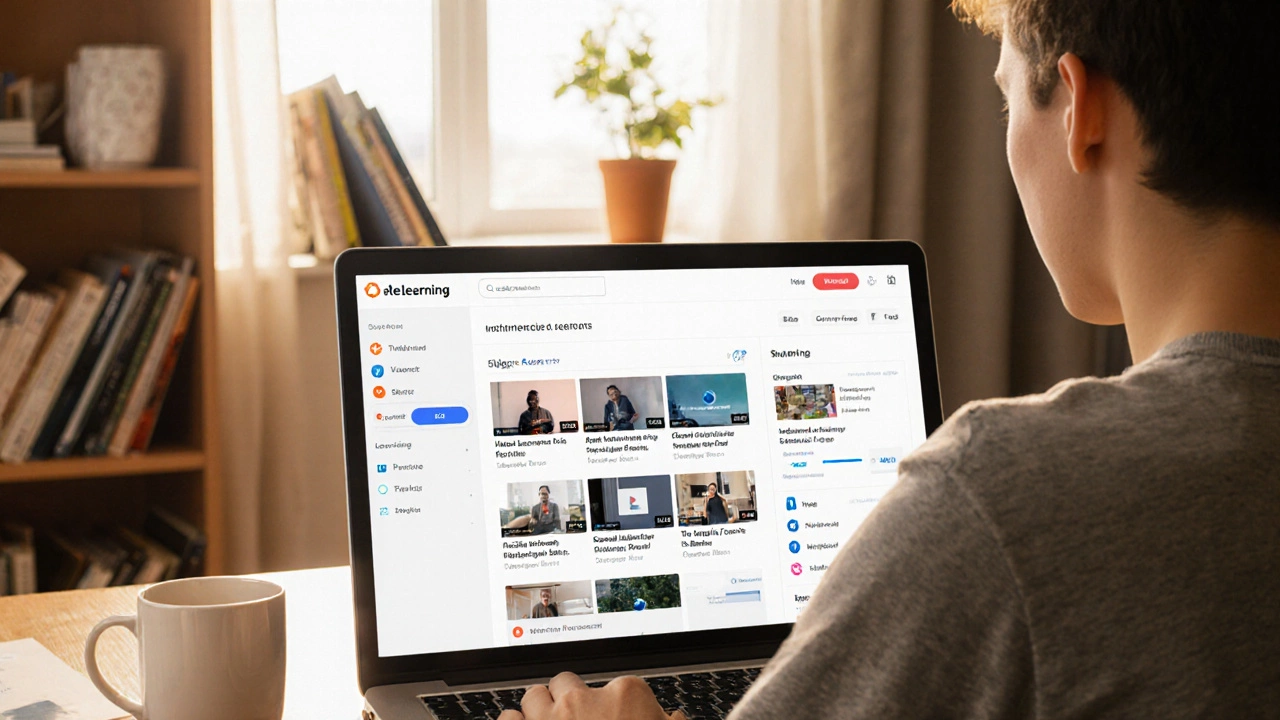eLearning guide: free courses, platform costs & practical tips for 2025
eLearning isn’t just a buzzword – it’s the way millions of Indians are studying without stepping into a classroom. Whether you’re chasing a coding skill, an MBA, or a quick certification, the internet has options that fit any budget. This page pulls together the most useful facts, from truly free degree programs to what you’ll pay if you want to build your own learning portal.
Why eLearning is hot right now
First off, eLearning saves time and money. A student in Delhi can watch a coding tutorial made in Bangalore without paying for travel or hostel fees. The same goes for professionals who need a quick up‑skill: a 4‑week digital marketing badge can be earned while working full‑time. Because the market is crowded, free resources have become high‑quality. Websites, MOOCs, and even government portals now offer accredited courses at zero cost – think of the free coding roadmap for 2025 or the legit online degree guides that separate scams from real programs.
Second, technology makes learning interactive. Video calls, quiz apps, and AI‑driven feedback turn a static video into a personal tutor. You’ll find virtual classrooms that let you raise a hand, get instant grading, and even network with peers across the country. That interactivity is why students are opting for eLearning over traditional brick‑and‑mortar schools.
How to choose the right eLearning path
Start with a clear goal. Want to become a developer? Begin with the free coding roadmap, follow the weekly plan, and avoid common pitfalls (like skipping practice problems). If you need a formal credential, check the free online degree list – look for accredited universities, zero tuition, and clear graduation requirements.
Next, match the platform to your learning style. Some people love short video snippets; others need printable notes and downloadable code. Platforms that charge for premium features often hide extra costs, so read reviews and test the free tier first. For example, Duolingo’s free language lessons work well for casual learners, but the paid version adds progress tracking that might be worth it if you’re preparing for a certification.
Budget matters too. Building your own eLearning site in 2025 can cost anywhere from $5,000 for a simple course portal to $50,000 for a full marketplace with AI analytics. The biggest expense is usually custom video production and secure hosting. If you’re a startup, start small – use open‑source LMS tools, add a few paid plugins, and scale as you grow.
Finally, stay disciplined. Online learning removes the physical teacher’s watchful eye, so set a study schedule, track milestones, and join community groups. Many free courses provide discussion boards; use them to ask questions and keep accountable.
In short, eLearning gives you flexibility, affordability, and a world of resources at your fingertips. Pick a goal, test a platform, watch your budget, and stick to a routine. You’ll be surprised how quickly you can turn a free online course into a real career boost.
How eLearning Works: A Simple Guide to Online Learning
Discover how eLearning delivers education online, its core components, delivery flow, benefits, challenges, and how to pick the right platform.
Exploring Effective eLearning Examples for Modern Learners
eLearning has transformed the way we approach education in the digital age by offering flexible, accessible, and interactive modes of learning. Whether through self-paced courses or virtual classrooms, students can acquire new skills and knowledge from virtually anywhere. The different types of eLearning platforms, such as MOOCs and LMS, cater to a variety of needs, and innovative teaching methods engage learners effectively. This article explores unique examples of eLearning to provide insight into its practical applications in modern education.
Understanding eLearning Systems: Revolutionizing Education
eLearning systems have transformed the educational landscape by providing digital platforms for learning. They cater to a wide array of educational needs, from formal schooling to corporate training, and offer a range of features such as interactive content, assessments, and progress tracking. By leveraging technology, these systems make education more accessible, flexible, and efficient. As the world becomes increasingly digital, the demand for effective eLearning solutions continues to grow, paving the way for innovative teaching and learning experiences.


